
Equine Solutions Catalog Page 23

NUTRITIVES FOR
NUTRITIONAL APPLICATION
Lyme Supp, EPM Supp, Choline, CHVEL, Ul-cerase.
LYME DISEASE Supplement
Lyme Disease adversely affects the functioning of both the thyroid and adrenal glands.
ABC's Lyme Disease Supplement contains a selected amino acid profile, herbs, and other nutrients to assist the functions of both the thyroid and adrenal glands.
This supplement will also aid in lessening the aches and pains associated with Lyme Disease to increase the quality of life for horses diagnosed with this disease.
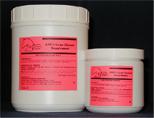
Item No.1842bkt Size: 2 pound jar (130 day supply) Current
Pricing is listed in the Shopping Cart.
See Catagories on the Left Side in alphabetical order, as they are links to sizes and prices and
the BUY NOW button. Click on the little blue grocery bag.
Quick! Take Me To The Shopping Cart & Check Out!... 
Ingredients: Dried Lactobacillus Acidophilus Fermentation Product, Aspergillus Niger Fermentation Soluble, Aspergillus
Orzae Fermentation Soluble, Bacillus Subtilis, Bifidobacterium Bifidum, Lactobacillus Plantarium, Enterococcus
Faccium, Choline Chloride, Sulfer, Copper Sulfate, Zinc Sulfate, Manganese Sulfate, Thiamine Mononitrate, Pyridoxine
HCL, L-Tyrosine, Vitamin A Acetate, Vitamin D3 Supplement, Natural Source of Vitamin E d-alpha-tocopheryl acetate.
No guaranteed analysis on the label. I hope I didn't misspell anything.
2 heaping scoops per day for horses, large dogs 40#'S 1 scoop. Small dogs 1/2 scoop.
To achieve best results use ABC PLUS digestive
4 oz per day and have the Free Choice
Stress system available. See Easy Start Option 3
TESTIMONY:
Hi there, first off, let me say that I have been singing your praises since last fall when I put my gelding on
your lyme supplement last fall. He literally has not taken a lame step since about a month and a half later, and
he has ringbone AND athritus. Now, when he comes running to see me, it's not a faster, unbalanced, crazy man trot,
he has finally begun to canter around on his own. You know what that means!! He's feeling GREAT and I am going
to be able to start working him to balance himself and then, eventually, ME so we can go off cantering in the fields.
WOOHOO!
Judy C. Paglia
Here's my testimonial! Gillian G. Middletown, CT
I was lucky enough to be tipped off to Vickie of My Fine Equine by an acquaintance last summer, and began to consult
with her at the time my mare was going through three weeks
of IV antibiotics for a bad case lyme, her fourth antibiotic treatment in a year. My gelding had also gotten lyme,
both almost as soon as we landed in Connecticut from California.
Our second year, we went through the worse winter Connecticut had known in fifty years; only their second winter
here, underfed at the barn we were at,
my horses lost weight and muscle mass.
And if all this wasn't enough, they also had to contend with a very very different barn culture in Connecticut
than the natural horsemanship world they knew in California, a horse culture
that relies on grain and oil more than generous amounts of hay to keep horses' weight up, likes to keep horses
stalled or closely penned, and is pretty tough on them psychologically......
My horses and I were pretty distressed by the time I chanced upon Vicki and my Fine Equine a year ago. She was
amazing. Worked with me long distance and very closely to figure out
how best to help my horses with her products. We worked out a protocol to boost their immune system, restore their
proper gut function, support their joints,
and "mop up" all accumulated toxins.
At her suggestion, I began to use Lyme and EPM homeopathic remedies (EPM as a preventative) which really helped.
Then we had break in luck: last November we mercifully moved
to the closest thing to a natural horsemanship barn one can find in this part of Connecticut. Vicki's protocols
really took off then. We tried ABC Mop Up soon after we moved and the
overall improvement was dramatic. At Vicki's suggestion I also added selenium and vitamin E to their ABC Plus;
it turned out they had not been getting enough selenium in the local grain/hay feed combo. That too made a difference
for the better. At every step of the way, with every development, Vicki has been there to help,
generous with her knowledge and time. And her products work.
My horses are now almost 100% back to their former selves: bright eyes, energy that is beginning to spare, healthy
coats, ever more supple joints. I only wish I had my own property
so I could follow the protocols fully (e.g free choice feed some of the products) but even then, Vicki will work
with you to make things work. I am eternally grateful.
Thank you, my Fine Equine!
(using the Homeopathic Lymes Treatment Protocol, the ABC Lymes Disease supplement, ABC PLUS, ABC MOP, ABC Selenium/Vitamin
E supplement,
Lymes Nosode to prevent and EPM Nosode to prevent, ABC Jeremy's Joint Jolt)
TESTIMONY Laura Occhipinti Higgins -
Many of you know ad some don't know if the battle I have had with my horse and Lyme. For 4 years now he has been
above the charts high Lyme. Hell we did 2 months worth of minocycline and his chronic levels increased after the
treatment.
His vet Johanna Kremberg was flabbergasted and suggested at that point we do tetracycline IV. I refused and said
"there must be a better way". Well with much research I decided to go the homeopathic way and reached
out to Vickie Myfineequine.
I did a full treatment and Lyme nosodes each month. I am happy to report that Dakotas Lyme tiger came back as close
to negative can be. His chronic values are still in the positive but very low. I have never been more happy!!!
Lyme is no joke and if not treated could eventually affect your organs and kill you. Please be aware and protect
against ticks and treatments as soon as you have a diagnosis.
Thank you all for your support!
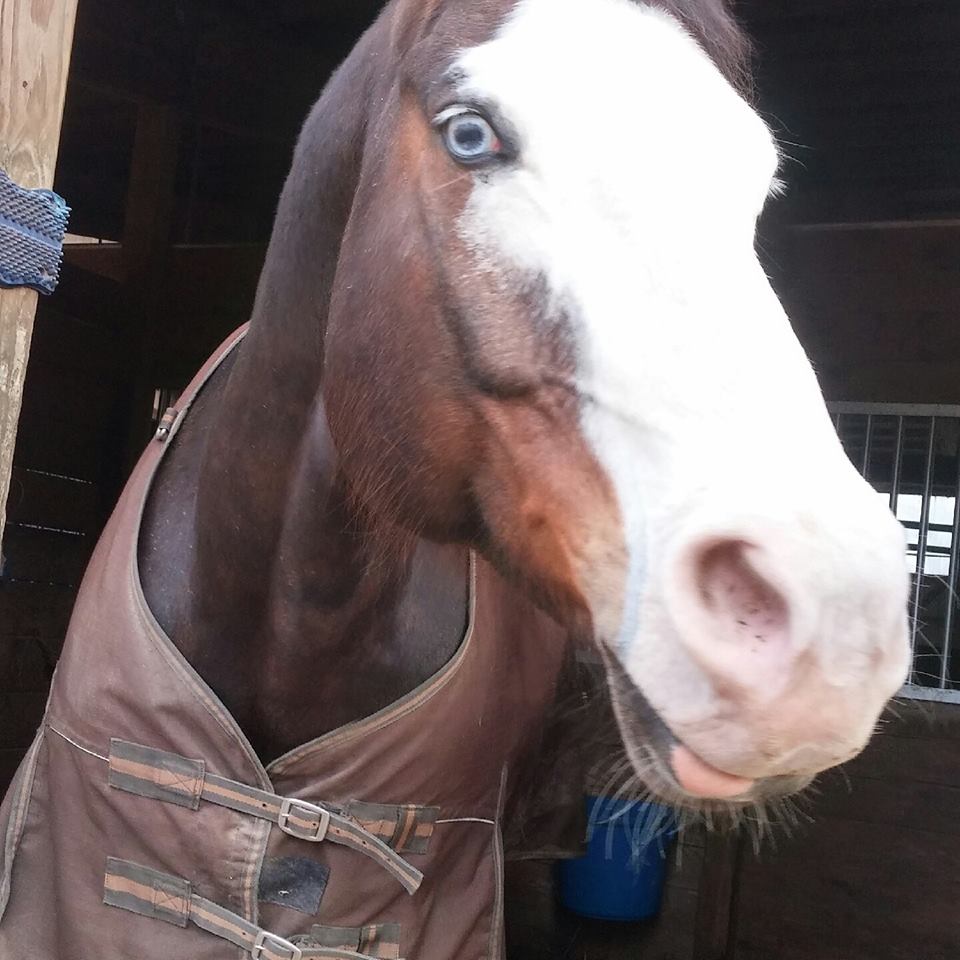
We also have the Click Here for LYME NOSODE
for homeopathic prevention of reinfection! There is also a homeopathic protocol to rid the animal of the Lyme disease.
Inquire.
Lyme Disease
What Is Lyme Disease?
Lyme disease is an infectious disease syndrome spread primarily by a tick no larger than the head of a pin. It
is caused by a spiral-shaped bacterium called a spirochete that is transmitted to animals and humans by the bite
of the tick. In people, Lyme disease can appear similar to other diseases such as flu or Alzheimer's disease. If
untreated, it can lead to joint damage and heart and neurologic complications. In animals, the disease can mimic
flu-like symptoms and can lead to joint damage, heart complications and kidney problems.
What Are The Symptoms?
Lyme disease is not easy to detect for there are a variety of symptoms. Clinical signs may not appear for a long
period after initial infection.
Animals seldom develop the rash that commonly occurs in people with Lyme disease. The common clinical signs in
animals are fever, inappetence, acute onset of lameness with no history of trauma, and arthralgia. These can develop
within weeks of initial infection. Recurring lameness, lymphadenopathy, glomerulonephritis, or myocarditis can
develop weeks to months later. In addition to these signs, cows and horses may have chronic weight loss, abortions,
and laminitis-like signs.
How Is It Diagnosed?
Diagnosis is based primarily on recognition of the typical symptoms of Lyme disease and by blood testing. It should
be noted that early in the disease, the blood test can be negative even though the disease is present. Only with
later disease does the test become reliably positive.
What Is The Treatment?
Antibiotics tetracycline, penicillin and erythromycin have been shown to be effective in treating the disease
in both animals and humans in the early stages. If detected early enough, there is almost complete relief of pain
and lameness within 24 hours of initial treatment in animals. Chronic cases of the disease respond much slower
and require longer periods of treatment.
How Can It Be Prevented?
Knowledge of where these ticks are found, avoidance of such areas, and, if bitten, prompt removal of the tick are
the primary preventive measures. Vaccines are available to protect dogs. Consult with your veterinarian for advice
regarding vaccination of your animal.
Lyme Disease in Horses
by Sandra L. Bushmich, MS, DVM
Associate Professor of Pathobiology
University of Connecticut, Storrs, CT 06269
What is Lyme disease? Lyme disease is
a bacterial illness caused by the spirochetal (corkscrew shaped) bacterium Borrelia burgdorferi. It is most commonly
transmitted by the bite of infected Ixodes spp ticks, commonly referred to as "deer ticks" or "black
legged ticks". Not all Ixodes spp ticks are infected with Borrelia burgdorferi. In areas highly endemic for
Lyme disease, such as the northeastern and mid-Atlantic USA, Minnesota, Wisconsin, and northern California, a greater
proportion of ticks will likely be infected than in areas where Lyme disease is less common.
How do ticks transmit the Lyme disease bacteria? Immature (larval) deer ticks hatch from eggs and can become infected
with Borrelia burgdorferi (the bacterium that causes Lyme disease) if they take a blood meal on a rodent which
is already infected with Borrelia burgdorferi. The tick may then transmit the infection to new hosts when it takes
its subsequent blood meals. These ticks have 3 developmental stages (larvae, nymph and adult) and must have a blood
meal before they can molt (change) into the next stage. They live for 2 years, overwintering even in cold climates.
The ticks must attach to the new animal host and feed for 12-24 hours before they can transmit the bacteria to
infect the new host. Rodents, especially the white-footed mouse, serve as the natural wildlife hosts of the tiny
larval Ixodes spp ticks. Middle stage ticks (nymphs) feed on a variety of wild and domestic species, including
humans, rodents, horses, cats, birds, etc. Deer are the predominant wildlife host for adult ticks, but domestic
animals, such as horses, cattle, horses and even cats may serve as substitute hosts.
What effect does Borrelia burgdorferi infection have on domestic animals? The disease caused by Borrelia burgdorferi (Lyme disease) affects humans and many domestic
animal species. It is a multisystemic disease, affecting primarily the joints, the musculoskeletal system and the
neurological system. It is important to know that in many domestic animals, including horses, cats, cattle and
horses, subclinical infection (e.g. infection without the development of clinical disease) is common.Thus, a domestic
animal living outdoors in a region where Lyme disease is common may be bitten by Borrelia burgdorferi infected
ticks and become infected with Borrelia burgdorferi. This animal may go on to develop symptoms of Lyme disease
(which happens less than 10% of the time) or may remain clinically healthy. Subclinical infection makes diagnosis
difficult, as the common blood tests for Borrelia burgdorferi infection measure antibodies (part of the body's
response to infection, and would be positive in an animal which had been exposed to Borrelia burgdorferi regardless
of whether the animal became clinically ill from the infection or not.
How do horses become infected with Borrelia burgdorferi? Horses living in Lyme disease endemic regions may become infected with Borrelia burgdorferi via
the bite of infected Ixodes species ticks. The adult ticks, which are present in the fall and early spring, are
the stage most likely to feed on horses. This stage of tick is usually large enough to be detected during grooming;
the ticks are often found around the head, throatlatch area, belly, and under the tail. Removal of the tick can
be accomplished by grasping the mouth parts of tick adjacent to the skin with tweezers and pulling gently back.
Prompt removal of the tick minimizes risk of Borrelia burgdorferi transmission.
What are the clinical signs of Lyme disease in horses? Clinical signs (symptoms) of Lyme disease appear in less than 10 % of horses that are infected with
Borrelia burgdorferi. The most common symptoms are lameness and behavioral changes. The lameness is usually associated
with larger joints (not the foot), and frequently shifts from limb to limb. The horse may appear to have a generalized
stiffness. Fever may or may not be present. Occasionally, laminitis (an inflammation of the tissues inside the
hoof wall) has been associated with Lyme disease. Behavioral changes associated with Lyme disease are difficult
to categorize. As well as an unwillingness to work (which may be associated with musculoskeletal pain), owners
frequently observe increased irritability and a changed attitude in these horses, which quickly return to normal
following treatment.
How is Lyme disease diagnosed in horses?
Diagnosis of Lyme disease in horses is particularly difficult for two reasons: horses, as athletes, are subject
to many musculoskeletal injuries and abnormalities which may result in lameness similar to that seen with Lyme
disease, and the blood tests commonly used for Lyme disease diagnosis detect antibodies to Borrelia burgdorferi;
since subclinical exposure (see above) is common, a positive antibody test just indicates that the horse has been
exposed to Borrelia burgdorferi, not that his illness is related to Lyme disease.
The diagnosis of equine Lyme disease is generally based on the following: i- History of tick exposure, or living in a Lyme disease endemic region. ii- Veterinary
clinical examination suggestive of Lyme disease elimination of other possible diagnoses by examination and testing
(lameness exams, x-rays, blood work for other diseases, etc.) iii- Positive blood tests for Lyme disease to support
the clinical diagnosis. iv-Response to appropriate therapy.
How is Lyme disease treated in horses?
Lyme disease is treated with antibiotics; the specific drug selected by your veterinarian will depend on his/her
experience and preferences for the particular case. Treatment length is often several weeks. Your veterinarian
may choose oral, intramuscular or intravenous routes of administration for antibiotic therapy. Response to therapy
is usually seen in the first 2-5 days following treatment. In addition to antibiotics, some veterinarians will
administer anti-inflammatory drugs and/or medicines to help replace the normal intestinal bacteria killed by the
antibiotics. A side effect of treatment in a small number of animals with Lyme disease is a reaction to toxins
released by Borrelia burgdorferi that are killed during the first few days of treatment. This can result in worsening
symptoms for a day or two, and in the horse this reaction may precipitate laminitis. It is therefore important
to monitor the horse for signs of laminitis (reluctance to move, "walking on eggshells" gait, increased
warmth in hooves) during the first week of treatment. The veterinarian should be contacted immediately if laminitis
is suspected, so preventive treatment may be initiated.
What can be done to prevent equine Lyme disease?
There is no vaccine for Lyme disease currently licensed for horses. There are several Lyme disease vaccines available
for horses, and a human vaccine should be available in the near future.One would expect an equine vaccine to follow.
Until then, prevention of Lyme disease in horses is based primarily on tick control. Daily grooming and removal
of ticks is one of the best ways to prevent Borrelia burgdorferi infection. (Remember, the ticks need to attach
and feed for 12-24 hours before they can transmit the bacteria). Tick repellents may be applied to the haircoat
(particularly head, neck, legs, belly, and under the tail) when horses are turned out. Tick repellents containing
the chemical permethrin are especially effective, and several products containing this chemical are approved for
use on horses and other domestic animals. Remember to apply these products in early spring and fall, when adult
Ixodes spp ticks are active. Keeping pastures mown will make the environment less hospitable for ticks, and removing
brush, wood piles, etc. from pasture areas will decrease rodent nesting areas, which also helps decrease tick populations.
As always, if you suspect Lyme disease or any illness in your horse, consult your veterinarian for early diagnosis
and treatment, as well as for advice on disease prevention.
From the Association of Equine Practitioners
![]()
EPM Supplement - Equine Protozoal Myelitis
Early aggressive drug therapy is usually the avenue pursued in treating horses diagnosed with Equine Protozoal Myelitis (EPM). Drug therapy can eliminate the protozoal parasite that causes EPM and any adverse side effects of treatment are rare. However, both pyrimethamine and the sulfonamides used to treat EPM inhibit folic acid metabolism. And Natural Vitamin E.
It is suggested in the September 1996 issue of Journal of Equine Veterinary Science,
Volume 16, Number 9 to supplement 4Omg orally of folic acid per day to help prevent the development of side effects.
EPM Supplement supplies Choline (see below) and folic acid in an available and balanced
forms.
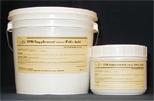
EPM Supplement without Folic Acid. Can be used with DRUG THERAPY ALSO!
Recommended for use without Drug Therapy and/or after Drug Therapy is completed
as a follow up.
EPM Supplement contains 8000 IU of Vitamin E, 16,509mg of Choline Chloride.
EPM Supplement w/out Folic Acid- 1.75 LB Bucket
SKU: 3191.75BKT PRICE: Current Pricing is listed in the Shopping Cart.
See Catagories on the Left Side in alphabetical order, as they are links to sizes and prices and
the BUY NOW button. Click on the little blue grocery bag.
Quick! Take Me To The Shopping Cart & Check Out!... 
EPM w/O Folic Acid
Guaranteed Analysis:
Vit E min 3000 IU
Vit A min 9000 IU
Choline min 4500 MG
Vitamin D3 min 3000 IU
Top dress 1 (16.5grams) scoop daily with feed.
Ingredients:
Choline Chloride, Natural Source of Vitamin E (d-alpha-tocopherl acetate), Lactobacillus Acidophilus Fermentation
Product,
Rice Bran, Stabilized Flax, Vitamin A Acetate, Vitamin D1 Supplement, Ascorbic Acid, Vitamin B 12 Supplement, Riboflavin,
Thiamine Mononitrate, Pyridoxine Hydrochloride, Niacin, Calcium Pantothenate, Citric Acid, Magnesium Oxide, Potassium
Chloride,
Manganese Amino Acid Chelate, Copper Amino Acid Chelate, Zinc Sulfate, Sulfur, Cobalt Carbonate, Soybean Oil, dried
Tomato
Pomace, Yeast Culture, Dried Aspergillus Niger Fermentation Product.
To achieve best results supplement with 4 ounces of ABC Plus per day and have the Free Choice Stress System available
at all times.
Feeding Protocol Recommended - Grain dry oats or barley. ABC Plus as the only top dress
supplement. Free Choice Stress system. See our ABC Easy Start Option #3 (Item#906).
No processed feeds. Grass Hay. Read more about the free choice system under Minerals.
We also have the Homeopathic 48 day EPM Protocol and Nosodes. Drug therapy
is not always effective.
****NEW Drug Treatment mentioned by a client in Ringtown PA. 09-21-07 and her vet. SULFAMETHOXAZOLE/TRIMETHOPRIM
it's a pill, dosage goes by wt. 3 month treatment using RED CELL at 1/2 strength also. Very effective in getting
rid of the parasite.
Ask your VET.
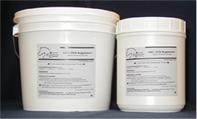
Adding ABC's Choline to your horse's diet is suggested following drug therapy.
Recommended with folic acid for use with Drug Therapy until it's completed.
Drug Therapy deplets folic acid in the body. Use the FREE CHOICE STRESS SYSTEM (BVC Mix)
TESTIMONY:
Hi, Vickie--
My colt has done FANTASTIC on the supplements plus colloidal silver. I was really skeptical, but was ready to try
anything & I'm glad I did.
So I would like to order some more Chvel and some more EPM supplement without folic acid.
The barn manager tells me I have a bit more than a week's worth left.
So let me know how to order them--
Thanks loads,
Beth W., Oregon
Equine Protozoa Myelitis (EPM)
EPM is an infection of the horse's central nervous
system, characterized by profound weakness,
muscle spasms, and problems with coordination.
Diagnosed since the 1960's and 70's the disease has
become increasingly common.
The life cycle of the EPM protozoa leads it throuh birds
to opossums, which may eat infected birds, and into
opossom scat that can become mixed with horse feed where
the parasite passes to horses. The incubation period can
be up to 2 years.
Not all horses exposed to the disease will get it or show
symptoms, and treatmens are getting progressively more
sophisticated and effective.
Equine protozoa myelitis (which, fortunately, is shortened to
EPM), is a common neurological disease. Although its symptoms can
appear similar to wobbler's syndrome, unlike wobbler's it can be
detected in more than one area of the spine.
EPM has been recognized in many breeds and ages of horses for
more than 20 years. It was called spinal segmental myelitis until
clusters of protozoa (single myelitis until clusters of protozoa
(single celled organisms were found around the affected nerves.
In the late 1980's the organism was identified as Sarcocystis
neurona, and an antibody test was developed.
Sarocystis neurona was originally thought to be concentrated in
Standardbreds, but is now known to occur in all horses in the
Western Hemisphere. Although the life cycle is not fully known,
recently the opossum has been determined to be a host within the
cycle, with birds acting as intermediaries for the parasite. The
incubation period for the disease is unknown.
EPM affects different neurons throughout the neurological system
and can result in dragging or spastic gaits. One side of the body
may be affected, but not the other. The organism can also cause
muscle atrophy in the jaw and forehead. If it affects the cranial
nerves, the horse may have problems eating or drinking, have
facial twisting, or undergo changes in the position of the eyes
and ears. Severe cranial infection can even cause bizarre changes
in behavior or seizures.
Diagnosis of EPM is based upon finding antibodies or, more
recently, a DNA detection test of either blood or cerebrospinal
fluid. Blood antibody titers, however, should not be considered
evidence of the clinical disease. Although spinal fluid samples
are more difficult to obtain, they are more reliable. The DNA
test is used to identify the presence of the organism in the
spinal fluid.
The good news for horse owners is that EPM is treatable in the
long-term with sulfa drugs and an antimalaria medication. Since
these drugs can cause anemia, folic acid is added to the diet.
Vitamin E has also been found to aid in nerve healing and is
added to the daily regimen. About 70 percent of horses respond to
treatment, although the level of clinical response may not result
in full recovery. Horses have been known to compete at the top
levels after treatment.
Equine protozoal myelitis should be considered a common endemic,
not epidemic, disease. Horse owners should treat the disease
aggressively, knowing that this is one of the neurological
diseases that justifies optimism. Your horse can get better if
treated.
Equine protozoal myelitis (EPM)
§ First described by Rooney in 1970 as a focal myeloencephalitis in 52 horses with asymmetrical gait and postural
abnormalities
§ Caused by infection of horses with Sarcocytis neurona
§ An intermediate host, opposums, have been identified
§ Infection appears to occur by consumption of contaminated food and water
§ EPM is the most common cause of neurological dysfunction in horses
May affect (produce clinical disease) 1-3% of all horses in US (esp. Warmbloods)
20 - 50% of horses have seroprevalence
60% of affected horses <4 years old
No apparent sex predilection
§ Seen in North,Central and South America
§ Clinical signs
Restricted to CNS
Asymmetrical ataxia most common
Proprioceptive deficits
Spasticity and stumbling
Muscle atrophy
§ Lesions
Focal segmental hemorrhage
Necrosis of gray and white matter
Focal nonsuppurative myeloencephalitis with lymphocytes, eosinophils and focal gliosis and neuronal necrosis
(micro)
§ Diagnosis
Immunoblot assay (Western blot) using lysed cultured merozoites
PCR for protozoal DNA (KY and CA variants)
CSF analysis - Albumin quotient:IgG index
§ Treatment
Sulfonamide antibiotics (sulfamethoxazole and trimethoprim) combined with pyrimethamine have been the mainstay
of current therapy
Diclazuril, and other coccidiostats, have also been used but with variable results
Supportive therapy
![]()
Choline
ABC's Choline is a supplement that is used primarily for horses that are suffering from diseases of the nervous system and is suggested for post EPM supplementation.
Choline is a component of acetylcholine, a neurotransmitter.
Acetylcholine carries messages between neurons, which enables the brain to communicate with itself and the rest of the body. It also has roles in motor behavior, memory, concentration, amino acid conversion, the transportation of materials, such as Calcium (Ca), across cell membranes, the metabolism of fat in the liver, and is essential in keeping mucous membranes properly moistened.
Presently, Choline is being used as a supplement for people in the treatment of Alzheimer's disease.
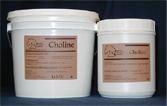
SKU: 1431.5BKT Choline - 1.5 LB Bucket PRICE:
SKU: 1434.5BKT Choline - 4.5 LB Bucket PRICE: Current
Pricing is listed in the Shopping Cart.
See Catagories on the Left Side in alphabetical order, as they are links to sizes and prices and
the BUY NOW button. Click on the little blue grocery bag.
Quick! Take Me To The Shopping Cart & Check Out!... 
![]()
ABC's CHVEL (sh-ve'l)
Supplement for Compromised Horses
Feed 2 scoops daily (1 scoop twice daily if possible).
Do not mix with sticky feed. If horse does not eat Chvel immediately,
leave out for horse to eat between meals.
SKU: 3298BKT Chvel - 8 LB Bucket PRICE: Current Pricing is listed in the
Shopping Cart.
See Catagories on the Left Side in alphabetical order, as they are links to sizes and prices and
the BUY NOW button. Click on the little blue grocery bag.
Quick! Take Me To The Shopping Cart & Check Out!... 
CHVEL
Is not a drug.
All nutritional ingredients.
Normal Suggested Usage is 1 scoop per feeding twice a day
Supplement for Compromised Horses
Directions: INGREDIENTS:
Dried Lactobacillus Acidophilus Fermentation Product, Dried Kelp, Choline, Vitamin A Acetate, D-activated Animal
Sterol, dl-alpha-tocopheryl acetate, Vitamin
B-12 Supplement, Riboflavin, Niacin, Magnesium Oxide, Choline Chloride, Manganous Oxide, Calcium Pantothenate,
Thiamine Mononitrate, Potassium Chloride,
Magnesium Amino Acid Chelate, Potassium Amino Acid Complex, Zinc Amino Acid Chelate, Manganese Amino Acid Chelate,
Copper Amino Acid Chelate, Zinc
Oxide, Manganese Oxide, Copper Oxide, Cobalt Carbonate, Ethylenediamine Dihydriodide, Selenium, Potassium Iodide,
Dried Aspergillus Niger Fermentation
Soluble, Citric Acid, Potassium Citrate, Calcium Sulfate, Sodium Hydroxide, Amino Acetic Acid, Magnesium Sulfate,
Sodium Sulfate, Silicon Dioxide, Dried
Aspergillus Oryzae Fermentation Soluble, Dried Bacillus Subtilis Fermentation Soluble, Bifidobacterium Bifidum,
Lactobacillus Plantarum, Enterococcus Faecium
And Lactobacillus Acidophilus, Calcium Ascorbate (Ester-C®), Vitamin E Supplement (Natural Source of Vitamin
E), Rice Bran, Food based vitamin/mineral
Complex with Tocopherols a, B, G, d, and Tocotrienols a, B, G, d, including high percentage of *unnamed Tocotrienols,
O2 Factor, Bio-Culture 2000,
Bio-Culture 3000. Contains 22 essential amino acids. (O2 Factor is specially formulated as an enzyme precursor
with antioxidant enzymes, Phytonutrients
And Tocotrienols derived from whole food concentrates. Bio-Culture 2000 and Bio-Culture 3000 are processed
using specialized technology proprietary
![]()
UL-Cerase
Ulcers are far more common in our horses than you may think. It is estimated that
100% of all horses will have ulcers at some point in tbeir life. 25-50% of foals may have them rooted from physiologic
stress. They may range from mild stomach lesions that will heal without a problem to severe ulcers that can cause
long term damage.
Equine ulcers have amny causes, ranging from stress, long term use of drugs and medications, to lack of food in
their stomach. The acids in a horse's stomach are so powerful that if they do not eat for more than 5 hours, they
may begin to develop ulcers. Horses are not subjected to the Helicobacter pylori bacteria that seems to be the
root of the cause of ulcers in humans. Therefore, horses can not be treated with antiobiotics the way humans can.
Acid is always present in a hores's stomach.
The best way to work with horses is to maintain an acid-alkaline balance in their stomach. make sure that they
have proper forage or good pasture in front of them at all times and supplement with something that will maintain
the integrity of intestinal flora and ensure the mucosa lining is protected. Ulcerase is a nutritional supplement
developed to help ensure appropriate acid balance and support of the mucosa lining.
Signs of ulcers may be poor appetite, weight loss, poor condition, mild to severe colic, grinding of teeth, salivation
from esophageal reflux, attitude changes, nervousness and irritability, discomfort and poor training or performance.
Since it is very costly to treat ulcers with traditional protocols it is important to prevent them before they
start. Ulcerase as a maintenance product costs less than other protocols presently on the market.
Guaranteed Analysis:
Crude Protein min... 12%
Crude Fat min... 1.5%
Crude Fiber max... 18%
Calcium min... .5%, max... .8%
Phosphorus min... .35%
Copper min... 10 PPM
Zinc min... 40 PPM
Vitamin A... 200 IU/lb
Ingredients: Oat powder, dried apple pectin pulp, chamomile, licorice, dried lactobacillus acidophilus fermentation
product, marshmallow, irish moss, meadowsweet, marigold, bilberry
Directions for horses: For Veterinary Use Only
Top Dress 2 scoop (1/2 oz) two times daily
Note: Store in a cool dry place. Keep lid tightly secure to ensure freshness.
SKU: 6021.25BKT UL-Cerase - 1.25 LB Bucket PRICE:
SKU: 6026.5BKT UL-Cerase - 6.5 LB Bucket PRICE: Current Pricing is listed in
the Shopping Cart.
See Catagories on the Left Side in alphabetical order, as they are links to sizes and prices and
the BUY NOW button. Click on the little blue grocery bag.
Quick! Take Me To The Shopping Cart & Check Out!... 
YOU MUST FEED LOW CARB FEED for horses with ulcers or prone to ulcers. Eliminate
all high carb feed!
Here is another product you can try for Equine Ulcers.
Equine-Zyme which contains
Mannaoligiosaccharide that has been proven to help prevent colon ulcers, along with Colostrum, and for the tougher
cases have used Tummy-Zyme which contains the Equine-Zyme with herbs to help heal the entire digestive tract. Dr.
Ward is a huge fan of using pro-biotics for prevention of many illnesses and problems.
The following is from Dr. Ward's November newsletter:
"We have come to understand many of the causes of gastric ulcers, such as infrequent feedings, high starch
diets, and exercise causing the acid in the lower protected portion of the stomach to move into the upper, non
protected portion. We also know the connection of non-steroidal anti-inflammatory drugs which decrease prostaglandin
production and therefore decrease the production of protective mucous to line the intestinal walls. For gastric
ulcers, treatments have been mostly focused on buffering the stomach acid or decreasing its production. Dr. Carter's
research indicates that while these treatments have been somewhat effective in treating and preventing stomach
ulcers they have actually increased the imbalance in the rest of the digestive tract and in many cases been responsible
for increasing the presence of colonic ulcers."
YOU MUST FEED LOW CARB FEED for horses with ulcers or prone to ulcers. Eliminate
all high carb feed!
![]() MY FAVORITE SPECIAL FEED MIX:
MY FAVORITE SPECIAL FEED MIX:![]()
I feed this mix once daily. If I have a horse that
needs supplements twice daily I'll hold out one dog food scoop full
for next morning feeding.
See More Nutritives - Go here...![]()
Quick! Take Me To The Shopping Cart & Check Out!... 
Use the Navigation Bars for quick and easy access.
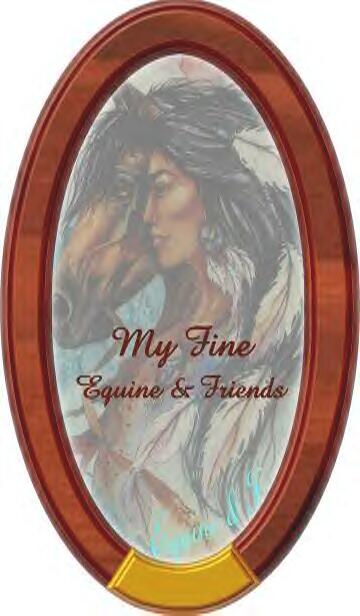
You can contact us by Snail Mail at: